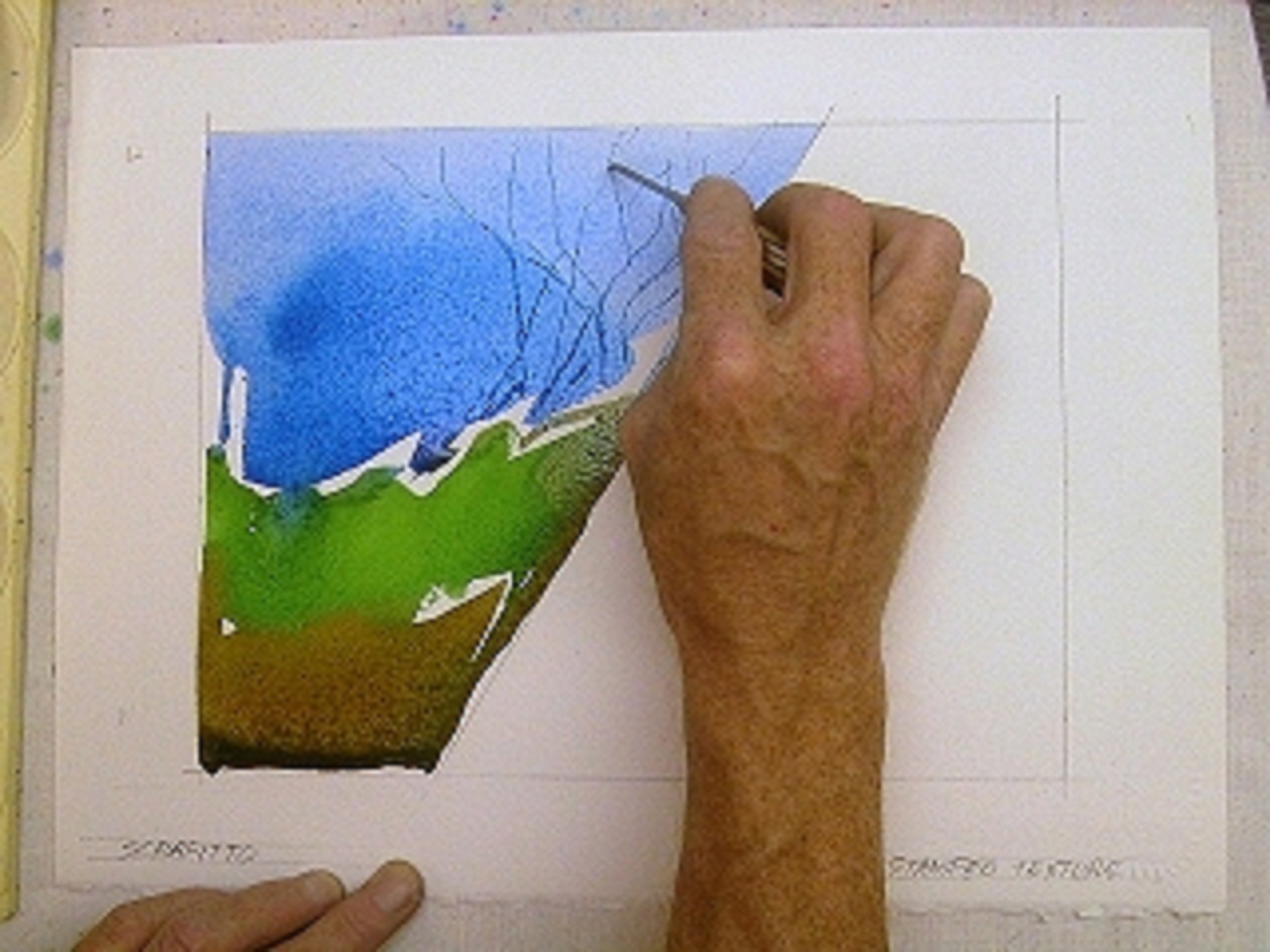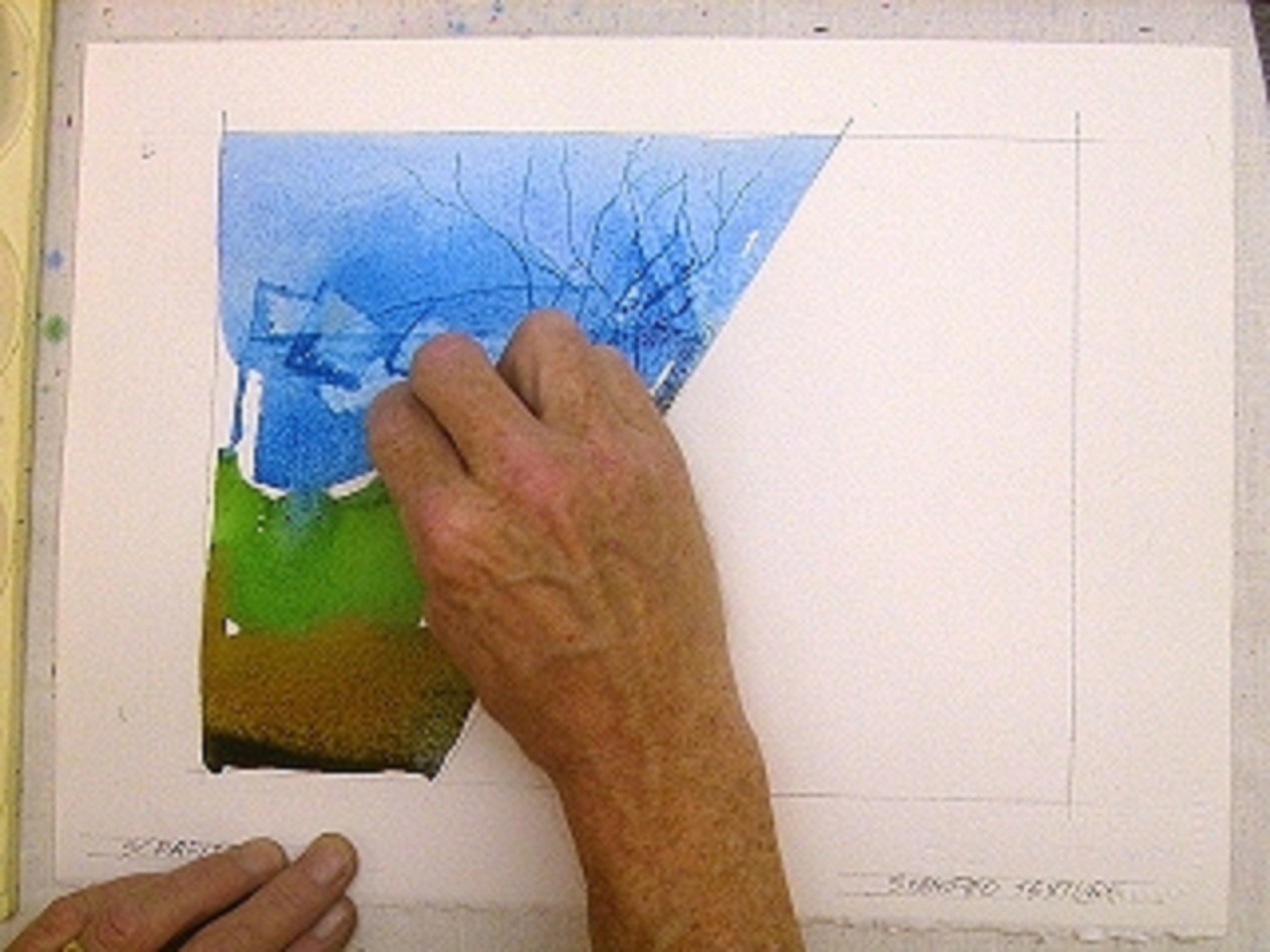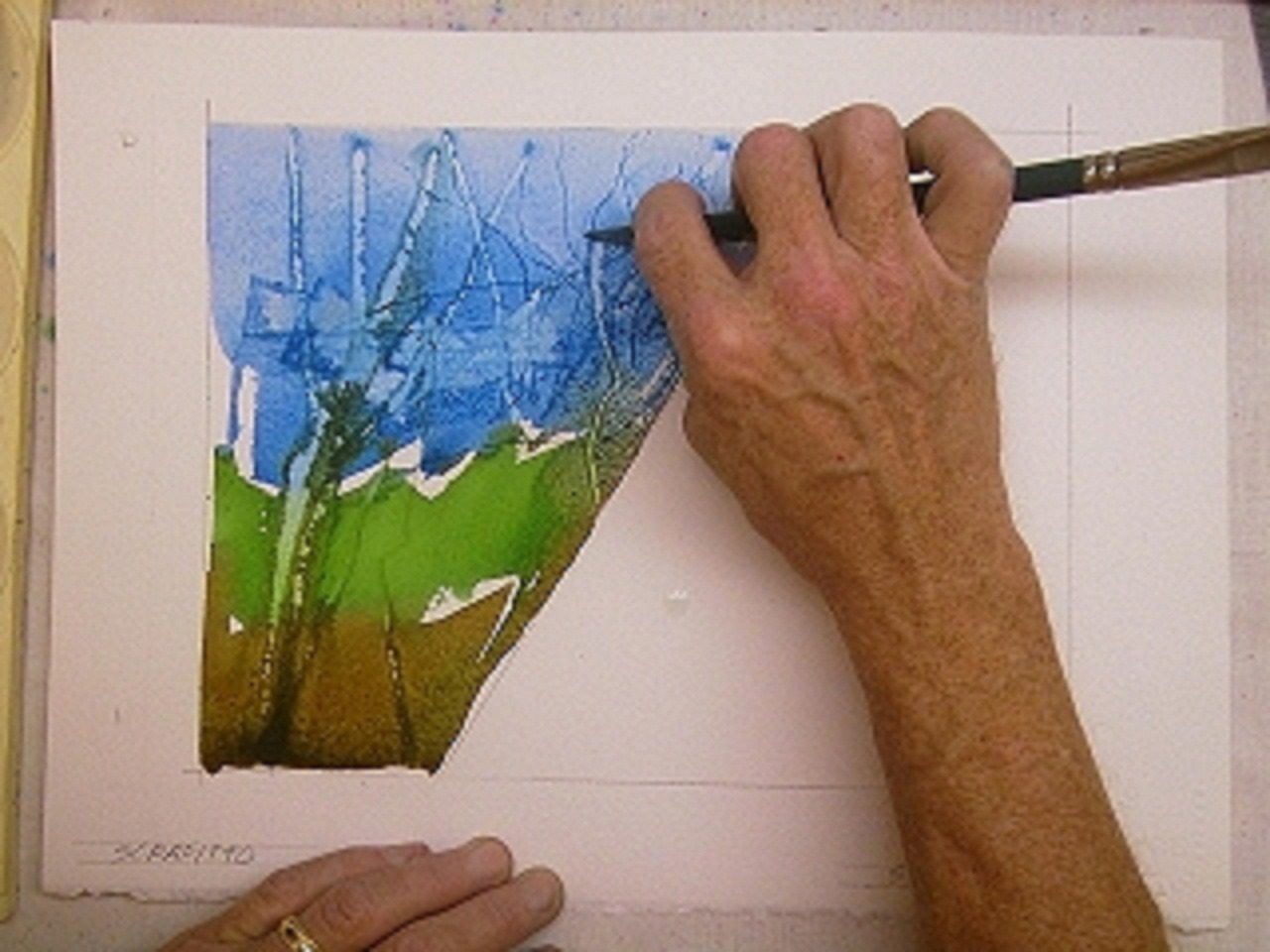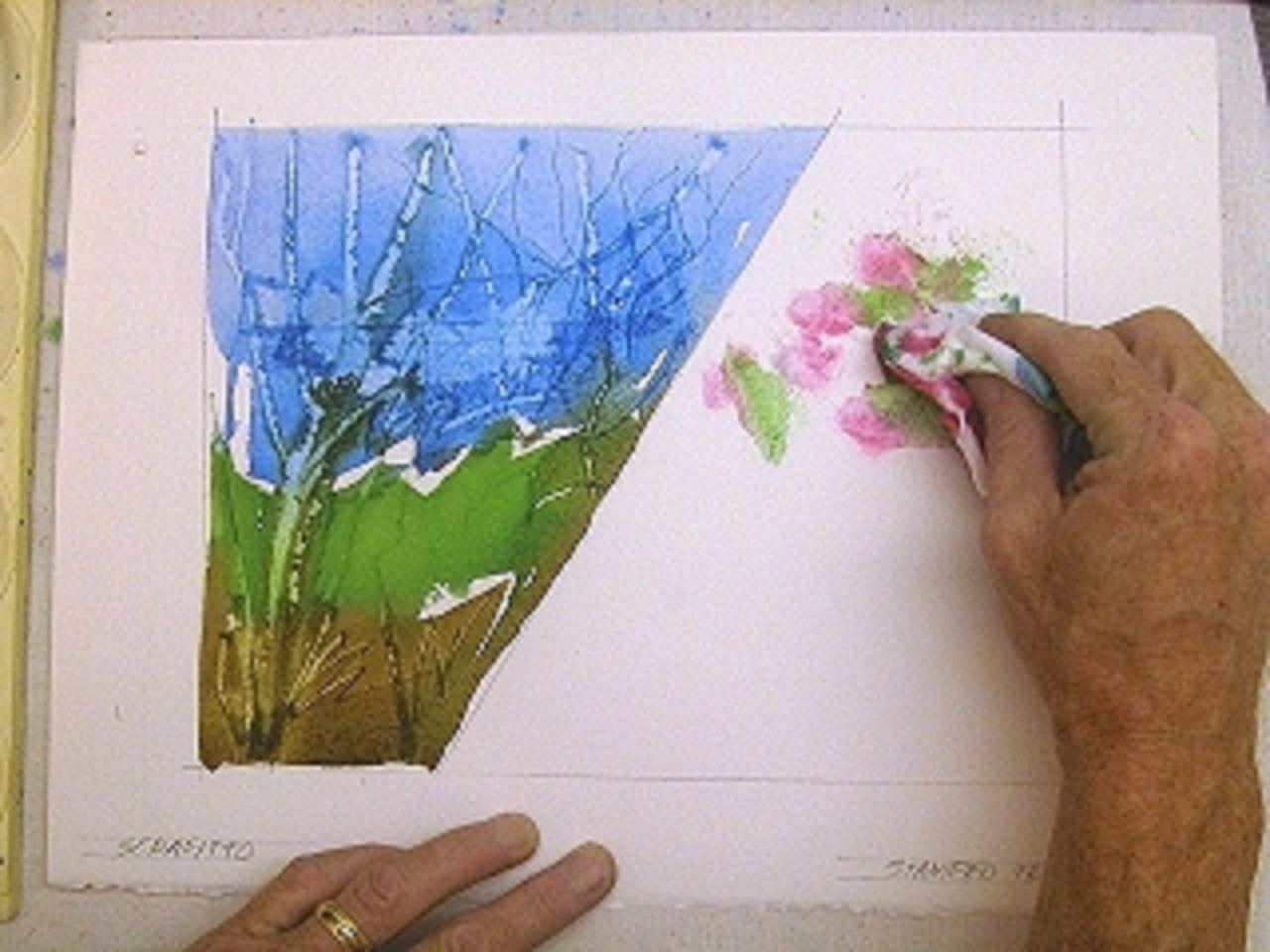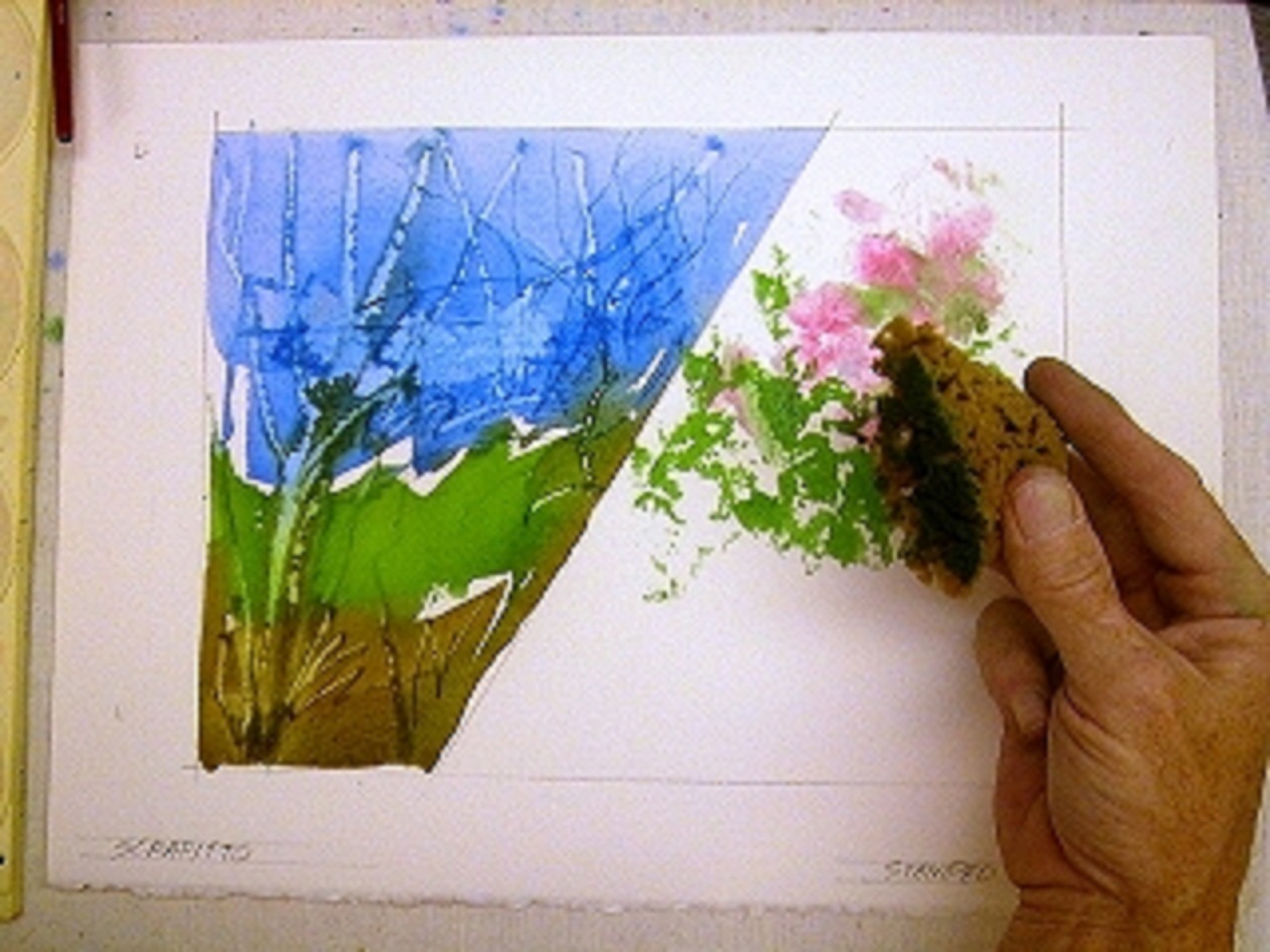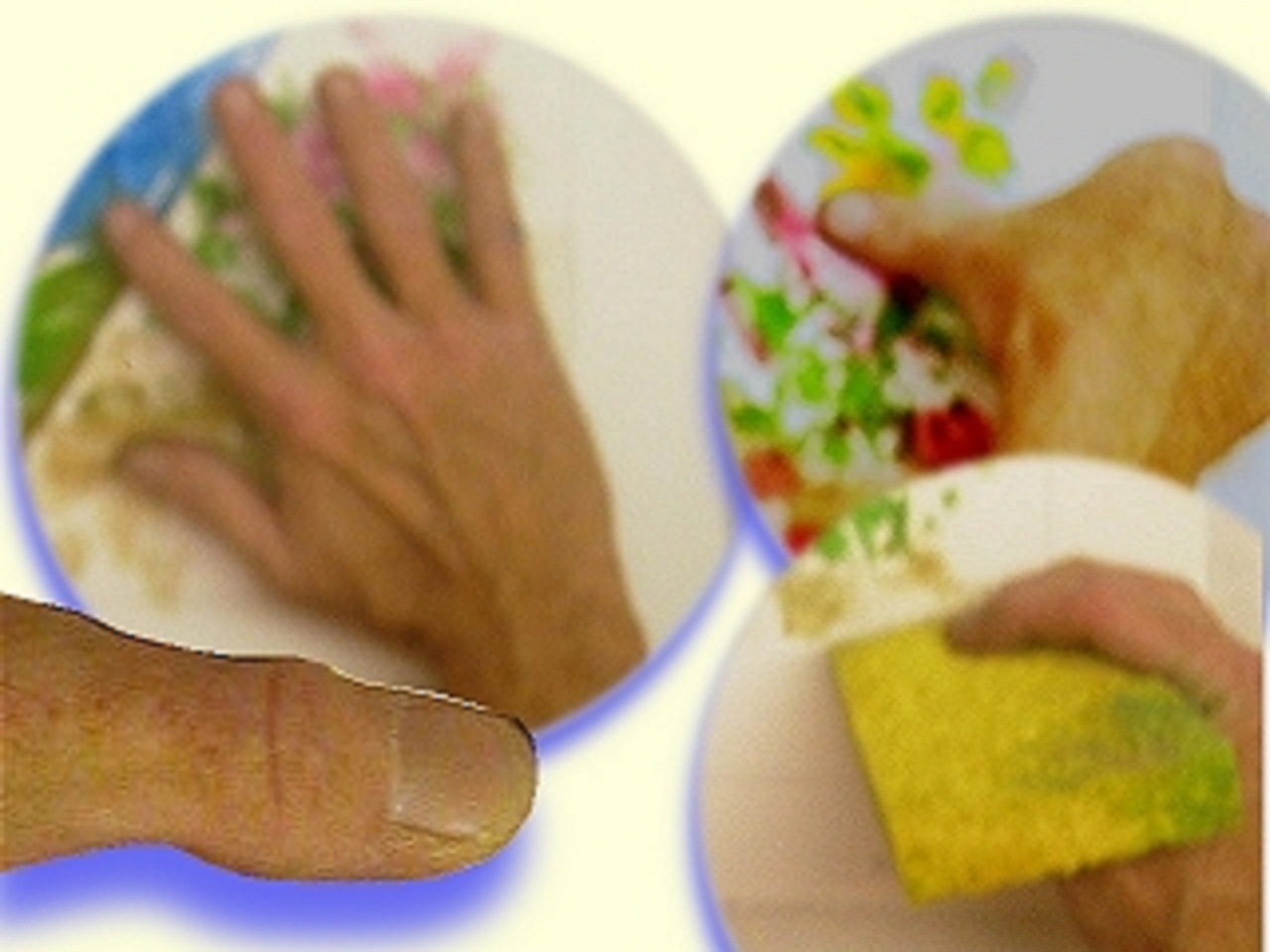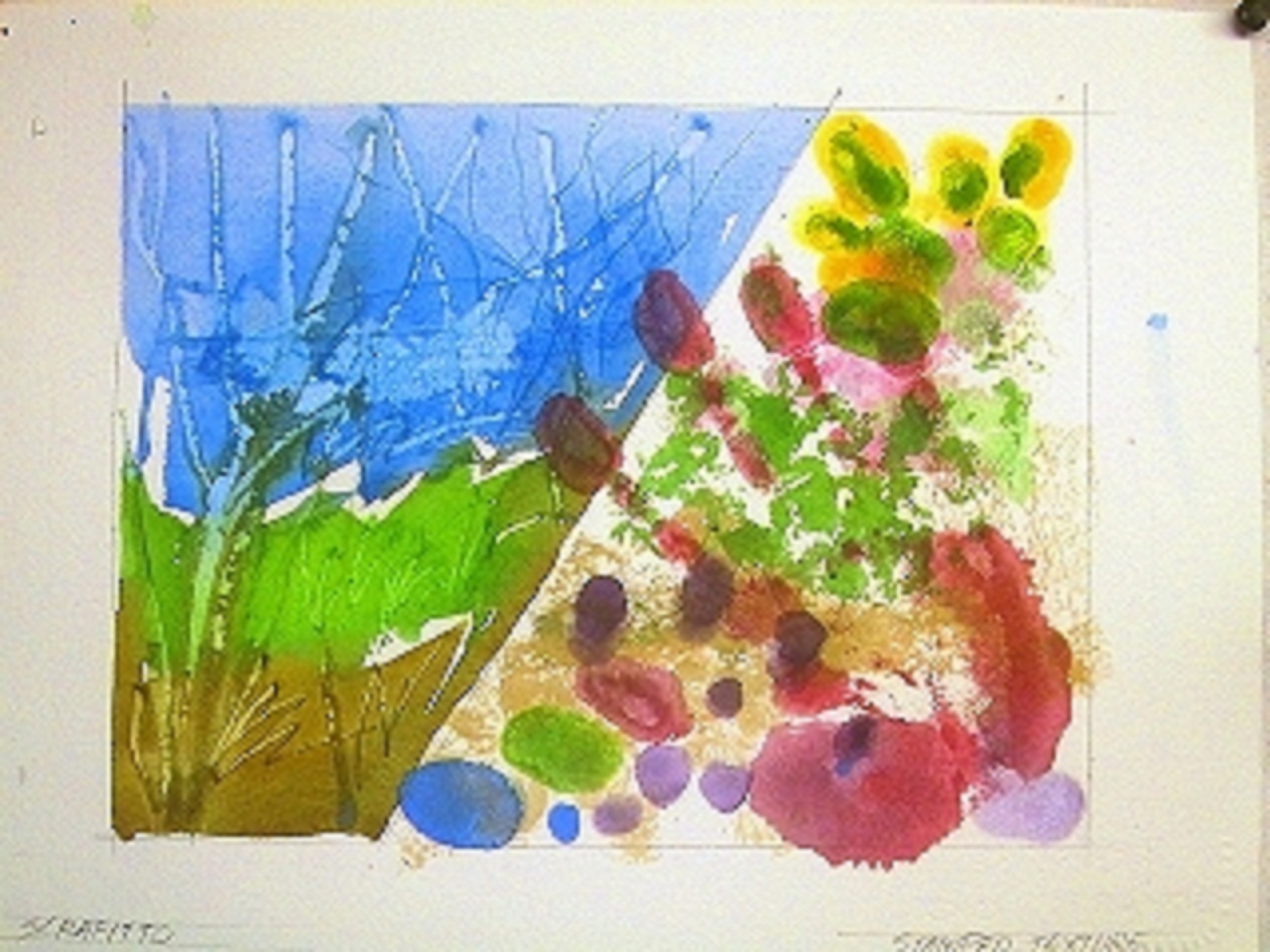Etching dark lines
Sgrafitto is an Italian term for scratching techniques usually associated with stratching through layered ceramic glazes to expose the underlying glazes. Do you recall those rainbow colors covered in black crayon you would scratch pretty pictures into as a child? Same concept. Still fun. Shown in this example is a variation scratching a line with a fine sharp point, in this case a pen knife. The wet paint is sucked into the bruised paper fibers as you scratch across the wash, creating dark lines. Used judiciously, this watercolor technique is excellent for adding details to landscape paintings in the form of naked trees and branches, and other flora.
Broadside scrapes on credit
I often use old credit cards, cut to shape, to scrape larger areas of paint around. The smooth flat edge will act as a squeegee and push the paint off the area you are scraping.
It's on the brush!
Many brushes come equipped with angled scrapers built into their handles. I have several sizes of synthetic brushes I've purchased just for their handles. I use the scraper end of my old Grumbacher 1" flat red sable and proceed to push some light color tree trunks up and into the "sky" area. Notice the dark edges that automatically form where you scrape away the paint. Had I waited another minute the scraped areas would not have as much back fill (fuzzy edges). Timing is very important. Scrape too soon, you'll get backfill. Scrape too late and it won't work at all. You'll burnish a smear through your paint.
Feats of stamping
Stamping is putting paint on something and pressing that something onto your painting. The stamping material you choose could be anything organic or synthetic. Try the classic potato, pencil eraser, or leather, lace, burlap, leaves, grasses or your fingers. Use your imagination, possibilities abound. Using some facial tissues I waded up, I dipped into green and crimson washes I had prepared on my palettes and stamped some texture in the upper section.
Sponges!
I used a rather stiff slice of a sea sponge and dipped into some Sap Green and stamped the middle section. The range of size, texture, density, and other variations in natural sponges is wide. This sponge gave an excellent rough organic texture when stamped. I'll have to remember that.
This could go on forever...
A finer small soft sponge, a cellulose sponge, and some rather tribal use of various hand parts take place... (A flurry of activity and a couple of blurry photographic sequences forced this montage, sorry —ed.)
Oooo, that was fun... where's the soap?
Click image to enlarge. As lame as some of the technical execution was in parts of this particular sequence, I found myself thinking of this tutorial as a piece of art and continued trying to "pull it together." I nested colors in colors using thumb and fingertips and signed it with a big red hand print. A tip of the hat to the Lascaux artistians.
